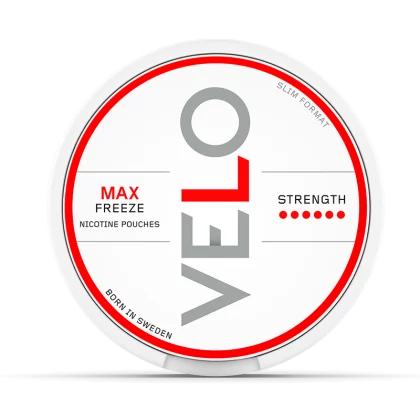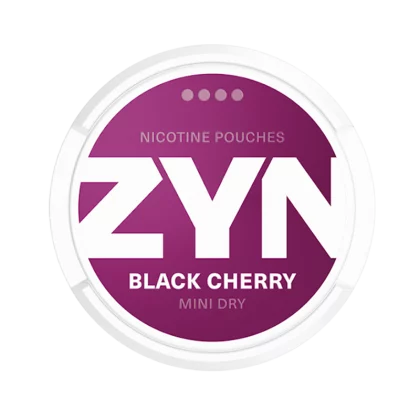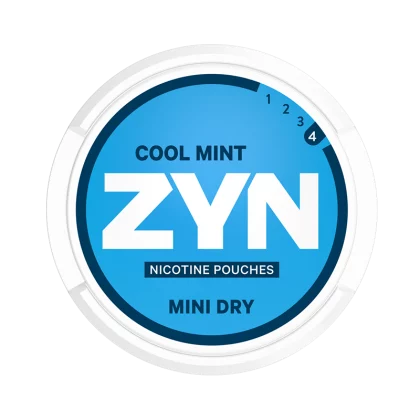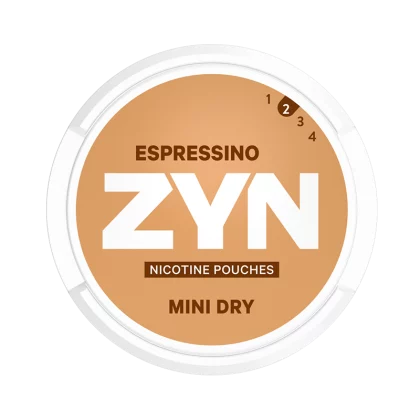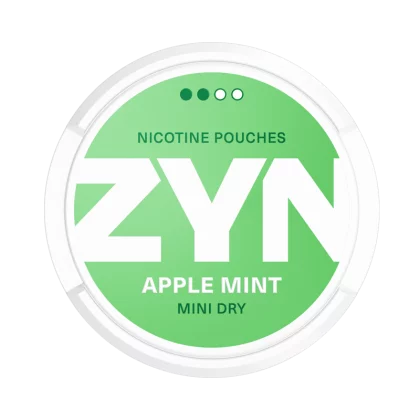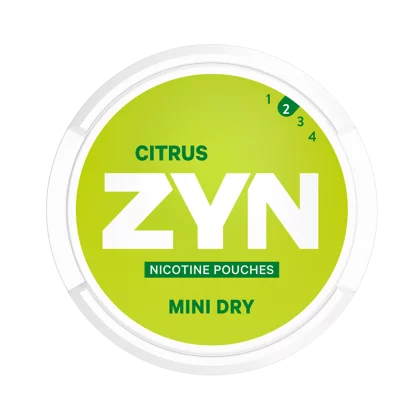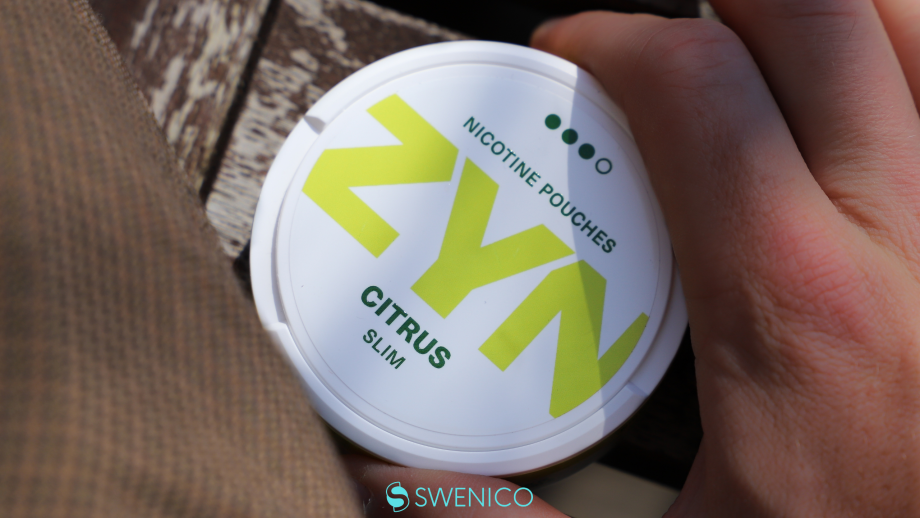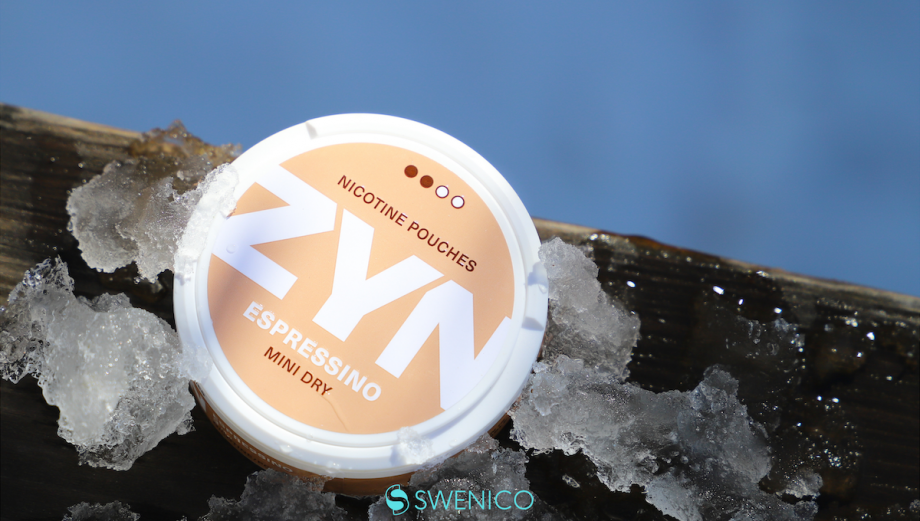Nicotine pouches contain, as you know, nicotine. But as you may have noticed, different terms are sometimes used to refer to it. For nicotine pouches, the term “nicotine salt” is heard from time to time, but what is it exactly and how does it work?
Zyn describes nicotine salt as follows:
Nicotine salt: A pharmaceutical-grade version of the same nicotine salt naturally found in tobacco leaves used to provide real nicotine satisfaction.
What is nicotine salt?
Nicotine salt is a form of nicotine and is the naturally occurring form of nicotine derived from tobacco plants. Nicotine exists in two distinct forms in tobacco leaves, namely deprotonated and monoprotonated. The nicotine in the tobacco plant binds to various acids which creates a more stable molecule. The result of this process is that nicotine salt is formed. Depending on the acid involved in this process, different types of nicotine salts can be formed.
Instead of the so-called “freebase” nicotine, nicotine salt is absorbed into the blood faster, providing a faster nicotine effect. For a long time, freebase nicotine has been used for nicotine extraction, but for the manufacture of nicotine pouches, manufacturers are seeing the advantages of using nicotine salt as it is more suitable for this type of oral product.
The reason why freebase has been used is that ammonia, which accepts a proton from the positively charged nicotine molecule and frees it from the salt that binds it in the tobacco leaf, is a good solvent for extracting nicotine to get the best taste.
In tobacco leaves, nicotine has a chemical composition of a salt which depends on the chemical reaction discussed earlier. Nicotine salt is therefore the natural state in which nicotine is found in tobacco leaves.
The chemical nature of nicotine is a weak base and consists of negatively charged particles. As a base, it tries to find positively charged particles (protons) to find stability and become ionized.
In the 1960s, Phillip Morris, one of the world’s largest tobacco companies, found that if the nicotine was deprotonated (via ammonia) or to remove its positive charge, it can take the nicotine back to its free state which makes it much easier for the nicotine to travel across the membrane in our bodies.
Phillip Morris found that if tobacco was impregnated with a salt such as diammonium phosphate, then ammonia would be released when the cigarette is burned, thus releasing the nicotine to freebase form.
Nicotine salts themselves are not the most effective way to deliver nicotine to your body compared to freebase nicotine. But this is where benzoic acid comes in, which we will go into more detail about later.
Benzoic acid serves two important purposes in salt nicotine:
- Nicotine salt helps to vaporize at lower temperatures and lowers the pH levels of nicotine salt, resulting in a smoother feel when used.
- A chemical reaction occurs that makes nicotine more absorbable.
Difference between ”Freebase” nicotine and nicotine salt
The major difference between freebase nicotine and nicotine salt is the type of nicotine and the purpose. A noticeable difference between the two is the harshness that higher nicotine levels often lead to. “Freebase” nicotine has a higher pH level which affects the alkalinity of the nicotine. This means that freebase nicotine, if used in nicotine pouches, would taste harsher the higher nicotine strength you choose.
Nicotine salt, on the other hand, has a lower alkalinity due to the benzoic acid which gives you a smoother and gentler sensation. In other words, nicotine salt is an important component in nicotine pouches which contributes to a better experience, especially if you typically use nicotine pouches with a higher nicotine content.
Another difference between freebase nicotine and nicotine salt is how the two are absorbed and travel through your body. While nicotine salts are not known to be the most effective way to deliver nicotine, in recent years new ways have been developed to make it more effective than freebase nicotine.
This is due to the benzoic acid that is added to the nicotine salt, which makes the nicotine much more readily available and can be absorbed more effectively than traditional freebase nicotine. With that said, a difference between these is that freebase nicotine does not contain any additives.
Due to the addition of benzoic acid, nicotine salt has a lower pH level which makes it feel “milder” and “smoother” which is especially important for an oral product such as nicotine pouches. Freebase nicotine also has a slower absorption rate than nicotine salt.
What is nicotine?
Nicotine is a pleasure-inducing substance that has been used for thousands of years. The use of nicotine, of course, began in the form of smoking and is believed to have begun as early as 5000-3000 BC in Mesoamerica and South America.
The Finnish Institute for Health and Welfare describes nicotine as follows: “Nicotine is a stimulating, uplifting and highly addictive substance.” When using nicotine pouches, the mucous membranes are absorbed, which leads the nicotine into the bloodstream.
Through the blood, nicotine is carried to the brain’s reward system, which gives a feeling of pleasure and enjoyment. Most people who use nicotine experience a feeling of well-being and pleasure, but it is also important not to consume too much nicotine. If you are new to nicotine or consume an excessive dose, you may feel dizzy and nauseous.
Nicotine occurs naturally in tobacco plants. In the brain, nicotine binds to specific receptors and triggers the release of dopamine and other signaling substances. As a result, nicotine can stimulate and ultimately affect short-term brain functions such as emotions, learning, and memory.
After repeated nicotine stimulation, the brain adapts to the presence of nicotine, which is a process that is reversible when a person stops using nicotine-containing products. This is why you can experience a stronger nicotine kick when you haven’t been using nicotine pouches for a while.
Nicotine-containing products are not recommended for use by persons who have or are at risk of developing heart disease, diabetes, epilepsy, or seizures. They should also not be used during pregnancy or while breastfeeding. Finally, minors should not use or have access to any products containing tobacco or nicotine, which is why the age limit for nicotine pouches and other nicotine products is 18 years.
Nicotine is not the primary cause of smoking-related diseases
Nicotine, although it is addictive and not entirely risk-free, is not the primary cause of smoking-related diseases. It is the other harmful and potentially harmful chemicals in smoke that are the primary cause of smoking-related diseases. A statement from NICE (National Institute for Health and Care Excellence) noted that “it is the toxins and carcinogens in tobacco smoke – not the nicotine – that cause disease and death”. Source: National Institute for Health and Care Excellence, “Smoking: Harm Reduction”, June 2013.
This is an important reason why nicotine pouches are considered to be a considerably better alternative than smoking for public health.
-
ZYN Cool Mint Mini Dry Normal 3mgPrice is hidden
-
VELO Freeze MAXPrice is hidden
-
ZYN Mini Black Cherry 6 mgPrice is hidden
-
ZYN Cool Mint Mini Dry Extra StrongPrice is hidden
-
ZYN Espressino Mini Dry Normal 3mgPrice is hidden
-
Zafari Desert Mint 4mgPrice is hidden
-
VELO Ice Cool Mint Strong SlimPrice is hidden
-
ZYN Apple Mint Mini Dry 3mgPrice is hidden
-
ZYN Citrus Mini Dry Normal 3mgPrice is hidden


